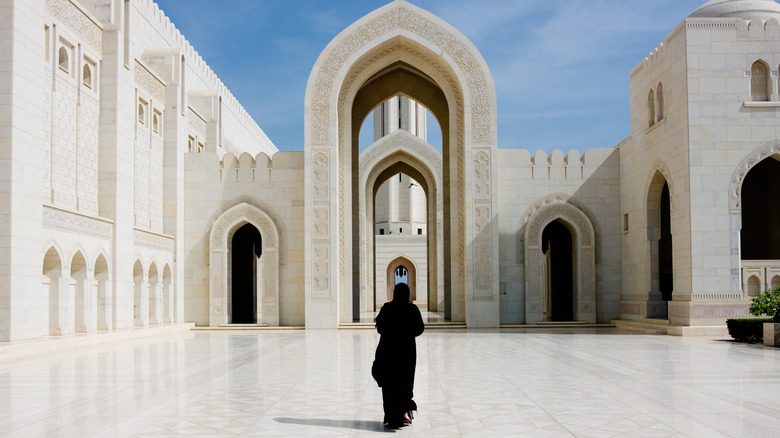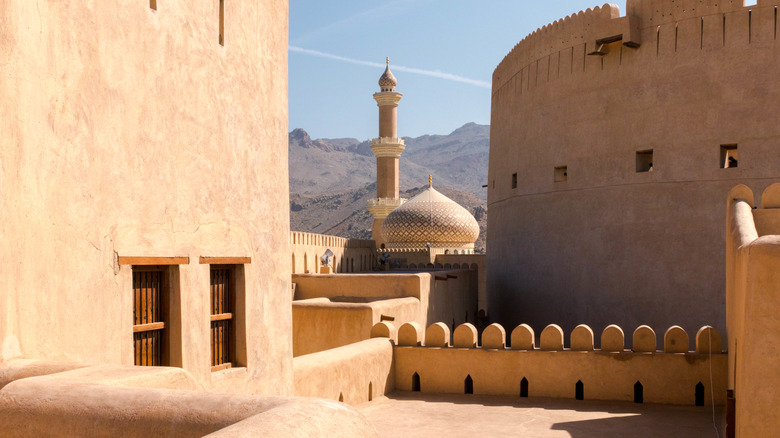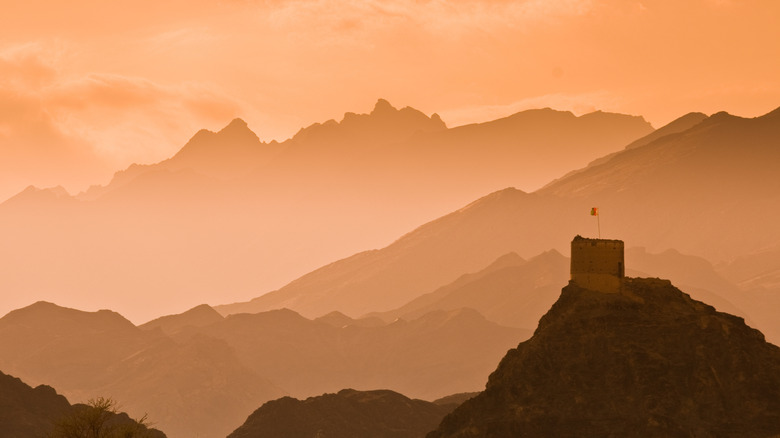Solo Female Travelers Praise This Hidden Gem In The Middle East As One Of The Safest Destinations
Safety concerns deter some travelers from wandering the vast deserts of the Arabian Peninsula. Worried about getting hurt, they avoid lounging in palm-fringed oases, exploring the earth's oldest cities, and seeing the architectural marvels of the Gulf mosques with their own eyes. The wonders of the Middle East have, for so long, been occluded by scary headlines. Given the fact that solo female travelers typically have to be much more conscious of their safety in new destinations than their male counterparts, it's understandable that many have skipped over this fascinating part of the world.
However, the Gulf nation of Oman is actually ranked as one of the safest countries on earth. Scoring a whopping zero on the 2024 Global Terrorism Index and reporting lower-than-average crime rates in the 2023 Organized Crime Index, the tourist-friendly Arabian Sea paradise poses minimal threat to travelers. Locals here leave their front doors unlocked, pickpocketing and petty theft are rarely heard of, and the Royal Oman Police take their duty to protect tourists very seriously.
Compared to many dangerous European destinations you should think twice before visiting and countries like the USA that rank in the top 20 most dangerous options for solo female travelers, Oman is a haven for safety-conscious solo female travelers, with frequenters of the r/femaletravels subreddit singing its praises. "I absolutely loved it! It's incredibly safe, so easy to be a woman traveling alone there," praised u/Ganesha_power, while others in the thread corroborated, saying, "I lived there and can say that it's extremely safe!" and "I've been twice and felt safe each time." From exploring regal mosques and stalwart fortresses to venturing into the vast sea of sand that swathes the Arabian Peninsula, you can get the quintessential Middle Eastern experience in this Gulf sanctuary.
Experience the ancient culture and history of the Middle East in Oman
The site of 100,000 years of human life and the oldest independent state in the Arab world, Oman's history runs deep. The cliffs that crown its interior mountains are dotted with large medieval castles, including the UNESCO-protected Bahla Fort. Visitors can walk through the vast fortification, passing through ogival archways smoothly hewn from unbaked brick and seeing the niches where worshippers have bent for daily prayers since the 12th century.
Plan to tour the forts from Muscat, a budget-friendly and safe city ideal for a solo trip. While in the city, take a stroll down the sun-doused promenade, the Mutrah Corniche. Where serene fishing boats now bob, centuries of maritime traders have pulled in. They arrived on the Arabian coast in search of fragrant frankincense, supple pearls, and strong horses to carry down the Silk Road. In turn, the silks, spices, and ceramics of the Far East, India, and Persia entered the ancient souqs that once served as the centerpiece for daily Arabian life.
One of the oldest souqs still standing in the country, the Mutrah Souq, backs on to the Corniche. Experience the evidence of the country's ancient maritime history by getting lost amid its narrow alleys, or spy the graffiti that stains the cliffs of the old town. It was left by 500 years of visiting crews, daubing their ship's name on the crag. While within the walls of Old Muscat, see the Sultan's palace and visit homes-turned-museums showcasing the living heritage of the modern city.
Explore the diverse landscapes of the Arabian Gulf in Oman
Though your mind may solely conjure images of the otherworldly desert landscapes of the Middle East when picturing the vast Arabian Peninsula, Oman is actually surprisingly diverse. Contrary to the barren tundra that the 108-degree Fahrenheit summers might evoke, date palms fringe oases with craters primed for wild swimming and deep gorges carved through the interior crag.
From Muscat, begin a journey down the wind-whipped coast, headed for the easterly Ras Al-Jinz. Be prepared for frequent diversions — this road will lead you past the turquoise pool of the Bimmah Sinkhole, the tumbling waterfalls of the Wadi Tiwi, and the remote azure river that runs through Wadi Shab. The route ends up at coastal Ras Al-Jinz, where endangered sea turtle hatchlings take their fateful first scuttle towards the open Indian Ocean between May and September.
Next, set an inland course into the vast Arabian Desert. The undulating ochre dunes of the Wahiba Sands rise as high as 330 feet, only occasionally perturbed by camel processions or solitary wandering Bedouin. As the native tribespeople of the Arabian Peninsula, the Bedouins are responsible for many of the camps and excursions that you can take in the dunes. Sleep under the stars as the nomads explain how they used the skies to navigate for centuries, take to camelback for a tour of the lands, or drift down the soft sands on a 4x4 dune bashing adventure.


